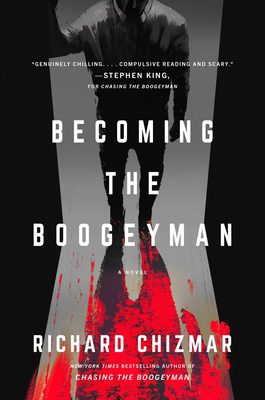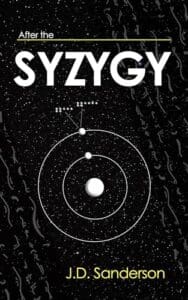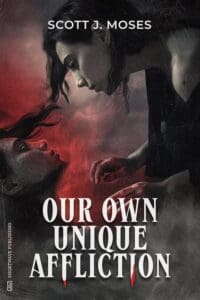
Synopsis
A riveting, haunting sequel to the New York Times bestselling thriller Chasing the Boogeyman—a tale of obsession and the adulation of evil, exploring modern society’s true-crime obsession with unflinching honesty, sparing no one from the glare of the spotlight. Will those involved walk away from the story of a lifetime in order to keep their loved ones safe? Or will they once again be drawn into a killer’s web? As the story draws to its shattering conclusion, only one person holds all the answers—and he just may be the most terrifying monster of them all.
Review
A big thank you to the kind folks over at Gallery Books for sending an advanced copy my way!
Richard Chizmar’s Becoming the Boogeyman, the sequel to Chasing the Boogeyman, can easily be labeled as my most-anticipated book this year. If you’re familiar with Chasing the Boogeyman, you’ll know of the magic I’m about to speak of regarding the assembly of these books. Chizmar wrote them as works of fiction, but they are arranged in the style of true crime novels. Essentially, Chasing the Boogeyman is a fictional autobiography of his childhood and growing up in Edgewood, Maryland, a town plagued by a string of serial killings. This novel, Becoming the Boogeyman, picks up from there. Despite the serial killer named “The Boogeyman” being apprehended, Richard Chizmar (the character) makes a grisly discovery that launches both him and his family into the spotlight of seemingly more violence at the hands of an unknown individual. Given that this is a sequel, I don’t want to delve into too much summary for fear of giving something away from the first book; let’s jump straight into the details.
First and foremost, this is exactly what I wanted in a sequel to Chasing the Boogeyman, a book I consider to be in the top three ranking of my favorite books. The style in which Chizmar writes is incredibly real and tactile; this is horror that is ingrained in the human experience of aging and coming to terms with the monstrosities of violence committed by other humans. Becoming the Boogeyman is set in the present day, and the issues at hand feel just as personal to Chizmar as in the previous book. A lot of the charm associated with Chasing the Boogeyman stems from the sense of nostalgia Chizmar elicits due to most of the events discussed occurring in the 80s. This charm still exists in this novel, just in a different form.
Considering that he has not experienced these events himself in the real world, Chizmar writes a very emotionally visceral narrative. There were multiple scenes focusing on his feelings regarding the safety of his family that felt so authentic. Yet, there is a fine line he walks in maintaining an interest in the case and investigating the crime at hand, resulting in severe emotional turmoil within his home. He’s left with a choice: continue down this path and see this through? Or walk away to spare his family? The raw nature of the dialogue and the personal dynamics between the characters made all of this feel incredibly factual despite all being fiction.
Now, it is important to emphasize that there are literal disclaimers printed in both books letting you know they are fabricated before the story gets rolling. However, this immersive style of writing had me Googling parts thinking they were true. It’s some kind of weird sorcery Chizmar bottles up and pours into these books which makes them so believable.
Additionally, Becoming the Boogeyman operates as this kind of perfect test lab, so to speak, that examines the effects of the true-crime phenomena our society faces. I’ll be the first to admit that I’m incredibly interested in true crime; however, an exploitative nature has emerged in recent history in which people’s tragedies have become monetized. Chizmar places himself square in the middle of this cultural/moral dilemma given that even in these books, he is the author of Chasing the Boogeyman. That’s right, this is as meta as you can get. But in doing so, we see his character battle with the “monster” he has created himself. Message boards, blogs, and fan pages are dedicated to “The Boogeyman” who rose to notoriety due to the popularity of Chizmar’s book. The conflicts Chizmar is faced with in this novel are a direct result of his own writing; talk about your own worst nightmare.
If this isn’t horrific enough, the crimes executed in this book are particularly creative and gruesome. Some events transpire right outside of Chizmar’s front door, elevating the sense of danger and demonstrating that this new monster is not afraid to strike close to home. Most interestingly with this sequel, he even begins to hint at something more than human driving the evils within the realm of these new crimes committed. Perhaps the most riveting feature of this book centers around this all-too-real horror that is brought to life with unique forms of media. Photographs of crime scenes, evidence, and security camera footage are inserted just as a true crime novel would display. These images are honestly frightening, making the threat and horror so much more realistic. If I could use one phrase to describe things, it would be “horrifically immersive.”
Overall, Becoming the Boogeyman is a deeply layered examination of the role true crime plays in our own world while simultaneously existing as an addictive, suspenseful horror/crime thriller. Richard Chizmar explores the wonders and evils of human nature through this lens, crafting truly chilling scenes. The complexity of these books cannot be stressed enough, but the reward is undoubtedly worth it. The creativity behind its formatting and execution is exceptionally impressive since no detail is overlooked. This sequel has met and exceeded my expectations; now, I just want more.









Leave a Reply